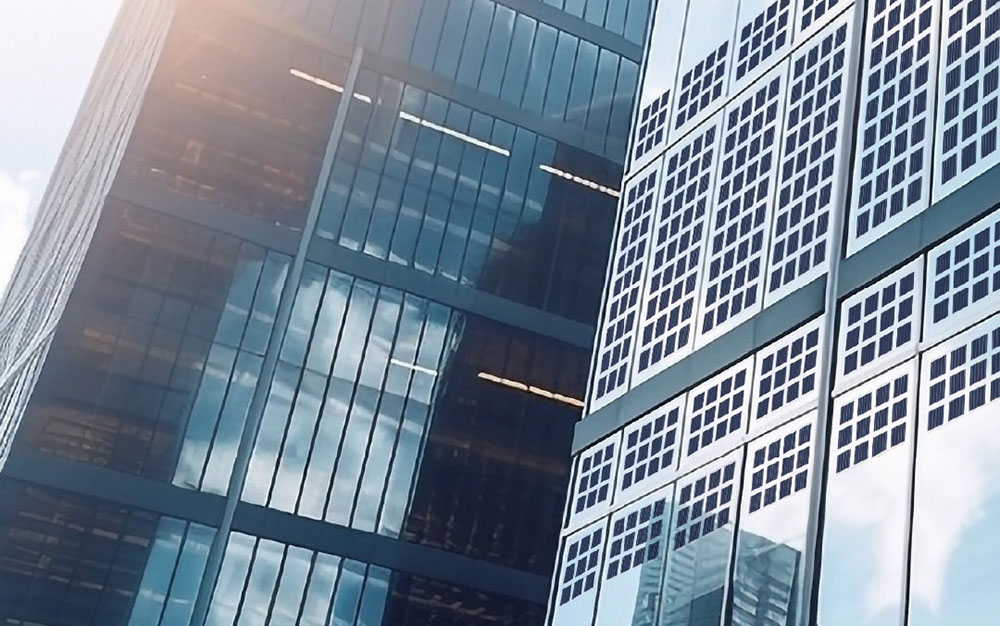 7 Advantages of Building Integrated Photovoltaics (BIPV) in Modern Architecture
7 Advantages of Building Integrated Photovoltaics (BIPV) in Modern Architecture
May 06, 2025
1. Energy Efficiency
One of the most significant advantages of BIPV systems is the ability to generate clean, renewable energy directly from the building structure. By integrating photovoltaic cells into roofs, facades, windows, and other components, buildings can generate electricity to maintain their operation, thereby reducing the need for external energy sources and reducing overall energy consumption.
The photovoltaic panels used should have high energy conversion efficiency to optimize energy output within a limited area.
The orientation and tilt of the panels should ensure maximum absorption of solar radiation.
Effective thermal management is essential to dissipate the heat generated by the panels to ensure the life of the building and the comfort of the occupants.
2. Aesthetic Integration
Unlike traditional solar panels that are visually distracting, BIPV materials are integrated directly into the building structure.
Design Flexibility: BIPV can be customized in color, shape, and texture, allowing architects to create architectural structures that are both visually attractive and aesthetically pleasing.
Enhanced Property Value: Well-integrated BIPV can enhance the modern appearance and energy efficiency of the building, thereby increasing the value of the property.
3. Cost-effectiveness
While the initial installation cost of BIPV may be higher than a standard PV system, its long-term cost-effectiveness is significant. By replacing traditional building materials with PV materials, developers can save on construction costs while providing energy for the building.
Reduced material costs: BIPV modules perform dual functions as building materials and power generation, offsetting the need for traditional materials such as roof tiles or exterior wall cladding.
Long-term energy savings: Over time, the energy savings of BIPV can provide a significant return on investment, especially for commercial and industrial buildings.
4. Environmental impact
BIPV systems help reduce a building’s carbon footprint by producing renewable energy on-site. This reduces reliance on fossil fuels and supports global efforts to combat climate change.
Reduced greenhouse gas emissions: By producing clean energy, BIPV helps reduce a building’s carbon emissions, contributing to a more sustainable future.
Comply with green building standards: Many BIPV systems enable buildings to meet or exceed green building certifications such as LEED, BREEAM, and other sustainability standards.
5. Space Efficiency
One of the main challenges of traditional solar panel installations is the need for dedicated roof space. BIPV, on the other hand, enables the building envelope itself to become a solar generator, maximizing the use of available surface area, such as walls, windows, and skylights.
Optimize vertical space utilization: In urban areas where roof space is limited, BIPV facades offer an effective solution for harnessing vertical surfaces to generate electricity.
Minimal visual impact: Because BIPV elements are integrated into the building design, they are less noticeable than traditional solar panels, making them ideal for historic buildings or sites where aesthetics are a priority.
6. Durability and functionality
BIPV modules are designed to withstand environmental factors such as wind, rain, snow, and extreme temperatures. In addition to their ability to generate electricity, they provide weather resistance and structural support like traditional building materials.
Protect the environment: BIPV systems not only generate electricity, but they also protect the building from external weather conditions, thereby increasing the durability of the structure.
Versatility: These systems are versatile—they can be used as roofs, cladding, or glazing, all while generating electricity.
7. Energy Independence
BIPV offers building owners the opportunity to achieve energy independence by generating electricity directly from the building structure. This is particularly important in areas with unreliable grid infrastructure or in remote locations.
Net Zero Energy Buildings or Positive Energy Buildings: BIPV can help buildings achieve net zero energy, meaning they produce as much energy as they consume. In some cases, buildings can even achieve positive energy, generating excess energy and feeding it back into the grid.
Onsite Generation: By generating electricity onsite, buildings can reduce their reliance on external energy suppliers and increase energy security.
더 읽어보기

 7 Advantages of Building Integrated Photovoltaics (BIPV) in Modern Architecture
7 Advantages of Building Integrated Photovoltaics (BIPV) in Modern Architecture